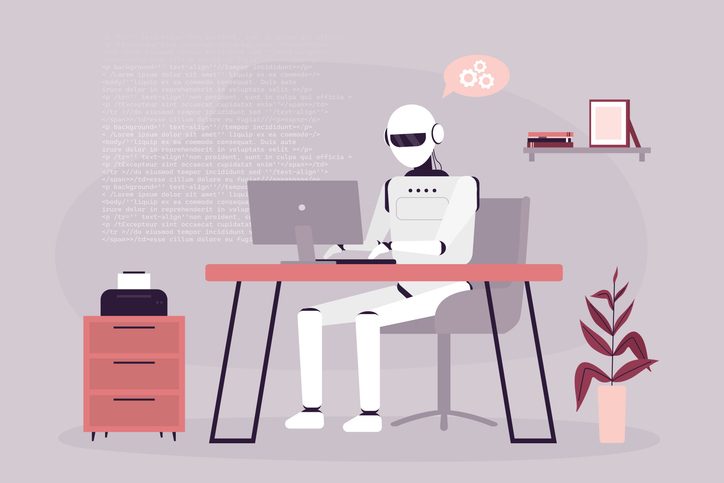
TL;DR:
UX is no longer just for users. It’s for the AI agents acting on their behalf. This article explores agent-based experience design (AX): what it is, why it matters, and how designers and product leaders can prepare for a future shaped by autonomous agents.
What Is Agent-Based Experience Design?
UX is no longer just for people — it’s now for the AI agents acting on their behalf. This is agent-based experience design.
By the time you finish reading this sentence, an AI agent may have answered a customer’s support question, scheduled someone’s next doctor appointment, or even negotiated a hotel upgrade on behalf of a frequent traveler. These agents aren’t futuristic abstractions. They’re here, quietly reshaping how we interact with digital systems. More importantly, agents are redefining the meaning of “user experience.”
This evolution marks the rise of agent-based experience design, a practice that rethinks UX from the perspective of AI systems acting on our behalf.
For decades, UX (the shorthand for user experience) has been a human-centered practice. It was about how people felt when they clicked, tapped, swiped, or scrolled through an interface. Designers obsessed over every screen, every icon, every tap target, all to ensure that humans could get from point A to point B as intuitively and painlessly as possible.
But now, something big is changing.
We’re entering a new chapter: one where users still matter, but the true intermediaries of experience are no longer human. They’re agents — autonomous, AI-powered entities acting on our behalf. And their needs are not the same as ours.
This evolution into agent-based experience design isn’t just technical. It’s philosophical. It’s the dawn of AX — Agent-based Experience — a new design frontier that doesn’t just consider how humans interact with software, but how software interacts with software on behalf of humans.
And if you’re in product design, tech leadership, or digital strategy, this moment in agent-based experience design should make you pause. Because the tools we’ve relied on, the frameworks we’ve built careers around, may no longer be sufficient.
In this article

The shift to agent-based experience design
In the early days of computing, the “user” was often another engineer. Then came the GUI, and suddenly computers were for everyone. This gave rise to wider usability testing, human-computer interaction, and eventually, UX as we know it.
That progression made sense in a world where the end user was the one doing all the clicking and navigating.
But increasingly, the “clicks” are being done by agents. According to a 2025 IBM survey, 99 percent of enterprise developers say they are either exploring or already developing AI agents for their organizations. Salesforce predicts one billion AI agents will be in service by the end of fiscal year 2026. The trend line is steep and unmistakable.
And the real kicker? These agents don’t care about rounded corners or clever microcopy. What they care about is access.
What do we mean by access? Structured data. Clear APIs. Logical task flows. These are the new markers of a well-designed experience — for agents, at least.
Which raises a provocative question: If we’re still designing interfaces that only serve humans, are we missing the point?
Redefining the role of the “user”
Let’s pause here. Does all of this mean humans no longer matter in UX? Not at all.
In fact, the most important principle of AX is still human-centered: these agents exist to help us. But it’s our interaction with the agent — not the underlying system — that now defines the experience.
Think of it like hiring a personal assistant. You don’t care how the assistant books your flight. You care that it’s the right flight, at the right price, with your TSA number applied. Similarly, when AI agents complete tasks on our behalf, our satisfaction hinges on the outcome, not the pathway.
This shift reframes the concept of “user.” The agent is now a proxy — a middle layer that absorbs the friction we once handled ourselves.
In practical terms, this means platforms need to be designed not just for human interaction, but for agent interaction. It’s not just UX and DX (developer experience) anymore. AX has entered the room.
Key elements of agent-based experience design
So what does AX actually look like?
First, it requires platforms to expose functionality in ways agents can understand. That means clean, well-documented APIs. Predictable data structures. Fewer ambiguous endpoints. Think of it as user-friendly design for machines.
Second, agents need context. If an AI agent is tasked with rescheduling a doctor’s appointment, it needs to know your availability, location, provider preferences, and insurance constraints. Without that data, it flounders — or worse, makes a bad decision.
Transparency matters too. When an agent makes a choice on your behalf, users need to understand why. This isn’t just a UX nicety — it’s a trust imperative. Design leaders are already exploring ways to bake explainability into interfaces. Think of it as “show your work,” but for software.
And finally, humans still need control. Just because agents are autonomous doesn’t mean they should be opaque. agent-based experience design must include clear off-ramps. This means having ways to override decisions, reverse actions, or opt out entirely.
The best AX designs treat agents not as replacements, but as partners. And just like any partnership, communication and accountability matter.
Anatomy of a good agent experience
|
Element |
Traditional UX |
Agent-Based Experience Design (AX) |
|---|---|---|
|
User |
Human |
AI agent acting on behalf of a human |
|
Interface |
Visual UI: screens, buttons, inputs |
Invisible: APIs, chat, voice, automation |
|
Success Metrics |
Usability, task completion, user satisfaction |
Outcome accuracy, agent execution, task resolution |
|
Design Focus |
Wireframes, layouts, screen flows |
Structured data, clear endpoints, explainability |
|
Toolsets |
UI kits, Figma, prototyping tools |
API maps, schema documentation, logic flow diagrams |
|
Experience Layer |
Human directly interacting with UI |
Agent navigating system on user’s behalf |
|
Challenges |
Accessibility, responsiveness, clarity |
Context awareness, trust, agent control and override |
Why agent-based experience design matters
For UX designers, this transition may feel a little existential. After all, much of our craft is built around observing humans and designing for their behaviors. If the “user” is now an agent, where does that leave us?
Some experts are blunt about the implications. Brian Reaves of the Nielsen Norman Group has suggested that up to 85 percent of today’s UX researchers could see their roles displaced in the next 18 months, as AI begins to automate large swaths of research and synthesis.
It’s a sobering projection. But it also hints at opportunity.
The designers and researchers who will thrive in the agentic era are the ones willing to pivot — to understand how agents operate, what they “need” to succeed, and how to architect systems that support both human goals and agent execution.
In short, it’s a chance to re-imagine the discipline.
Designing for an invisible interface
One of the most fascinating elements of AX is that it often operates without a visible UI.
Think about it: when a chatbot answers a question, when a voice assistant turns on your lights, when an agent files an expense report — it’s all interface-free. Or rather, the interface exists, but it’s invisible to the human.
This is what some are calling “Zero UI.” It’s not science fiction. It’s already happening.
And designing for it requires an entirely different mindset. You’re not creating screens. You’re building environments where decisions are made on your behalf, often without your awareness. That’s both powerful and precarious.
It forces a new kind of accountability. Because when things go wrong (and they will) users won’t blame the agent. They’ll blame the product.
The business case for AX
For all the technical nuance, the shift toward AX is being driven by something very simple: outcomes.
AI agents promise to reduce friction, cut costs, and increase personalization at scale. In customer service alone, agentic systems are expected to autonomously resolve 80 percent of common support issues by 2029. That kind of automation is convenient and transformative.
Statista projects the market for agentic AI to hit $5.1 billion in 2025. If that number sounds ambitious, consider this: we’re already seeing widespread adoption of agent pilots across industries, from healthcare to finance to travel.
But here’s the thing. An agent is only as good as the system it interacts with. And if your platform isn’t designed for agents to succeed, your users won’t succeed either.
This is where AX becomes a differentiator. Not just in terms of functionality, but in brand trust, user satisfaction, and long-term loyalty.
Design roles in an agent-based experience world

As this shift unfolds, the job of a designer is changing. The future isn’t just about pixels — it’s about protocols. Understanding APIs. Thinking in systems. Collaborating with AI engineers and data scientists. Shaping the behavior of non-human actors.
It’s still about empathy, but we mean empathy with an expanded lens. One that includes not just the human on the other side of the screen, but the intelligent agent navigating the system for them.
This doesn’t diminish the role of UX. If anything, it makes it more strategic. Because now, experience is about more than what users see — it’s about what they delegate.
And designing for delegation? That’s a whole new challenge.
What comes next
We’re only at the beginning of the AX era. Over the next year or two, we’ll see more pilots, more experimentation, and inevitably, more stumbles.
But the trajectory is clear: as agents become more capable and trusted, our interaction with software will increasingly happen through them, not with them.
For businesses, that means rethinking what “experience” really means. For designers, it means expanding the toolkit. And for users, it means a new kind of relationship with technology — one where tasks are handled for us, not by us.
It’s a strange, exciting, slightly unnerving future. But it’s not speculative. It’s already here.
The real question isn’t whether we’ll make the shift.
It’s how well we’ll design it.
Is your product ready for agent-based experiences?
We offer a free UX audit to evaluate how well your current system supports AI agents. Request your audit now
Frequently asked questions about agent-based UX
What is agent-based experience design?
Agent-based experience design (AX) focuses on creating systems that are usable and efficient for AI agents acting on behalf of humans, not just human users directly.
How is AX different from traditional UX?
UX centers around human interaction with software. AX centers around AI agents interacting with systems for users—so the interface often becomes invisible.
Why does AX matter for product leaders?
As more products rely on autonomous agents, platforms need to be designed with structured data, clear APIs, and logic flows that support non-human actors. AX ensures your product stays usable in an agent-driven world.











